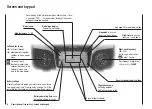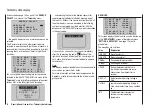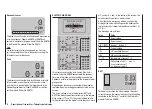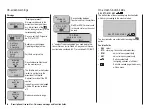
22
Description of transmitter
PUPIL
#11
0:01h
stop
flt
DSC
0:00
0:00
5.6V
HoTT
The transmitter is now ready for use.
In contrast, when the
mx-16
HoTT is used in
Teacher mode, the transmitter must be switched on
before
the appropriate cable is plugged in.
Connect the other end of the connecting lead to the
3.
appropriate apparatus, taking into account the oper-
ating instructions supplied with that device.
Important:
Ensure that all connectors are firmly seated in
their sockets.
Note regarding flight simulators:
The range of flight simulators available commercially
is now very wide, and you may find that it is necessary
to swap over certain contacts at the barrel connector
or the DSC module. This work must be carried out by a
Graupner Service Centre.
DSC
Direct Servo Control
The original function of this socket was for “Direct Servo
Control”, and that’s why the abbreviation is still in use.
However, for technical reasons “direct servo control” is
no longer possible with the HoTT system using a diag-
nosis lead.
The
mx-16
HoTT transmitter’s standard two-pole DSC
socket is now used as a Trainer (buddy box) socket
(Teacher or Pupil), and as an interface for flight simula-
tors.
For the DSC connection to work you must check the
following:
Carry out any adjustments required in the appropri-
1.
ate menus:
See page 154 for information on setting up the
mx-
16
HoTT transmitter to work as part of a Trainer sys-
tem.
ALWAYS
2.
leave the transmitter’s On / Off switch in
the “
OFF
” position when using a flight simulator, and
when using the
mx-16
HoTT transmitter as a Pu-
pil unit in a Trainer system, for only in this position is
the RF section of the transmitter module switched off
(no RF signal) even when the DSC lead is plugged
in. At the same time the transmitter’s current drain is
reduced slightly.
The central Status LED should now glow a con-
stant red, and the abbreviation “DSC” appears in the
transmitter’s base display on the left, below the mod-
el number. At the same time the display of telemetry
symbols is suppressed:
Data storage
Card slot
micro-SD and micro-SDHC
When you switch off the
mx-16
HoTT transmitter and
remove the battery compartment cover, you will see the
card slot for memory cards (of the micro-SD and micro-
SDHC type) in the right-hand side of the compartment:
In addition to the memory card supplied as standard, it
is possible to use any standard commercial micro-SD
memory card with a capacity of max. 2 GB, and any mi-
cro-SDHC card with a capacity of up to 32 GB. However,
the manufacturer recommends the use of memory cards
with capacities up to only 4 GB, as these are completely
adequate in all normal circumstances.
The memory cards for which the transmitter is intended
are familiar from their use in digital cameras and mobile
telephones. Place the card in the slot with the contacts
facing up, towards the back panel, and push it in until
it locks. When the battery has been installed and the
battery compartment closed, switching the transmitter
on causes a number of folders to be created on the
memory card. At the same time a stylised memory card
graphic appears in the base display to indicate that a
memory card is inserted.
Summary of Contents for mx-12 Hott
Page 1: ...Programming Manual 33116 mx 16 HoTT 3 en mx 16...
Page 35: ...35 For your notes...
Page 49: ...49 For your notes...
Page 55: ...55 For your notes...
Page 59: ...59 For your notes...
Page 63: ...63 For your notes...
Page 69: ...69 For your notes...
Page 91: ...91 For your notes...
Page 101: ...101 For your notes...
Page 123: ...123 For your notes...
Page 181: ...181 For your notes...
Page 193: ...193 For your notes...
















































